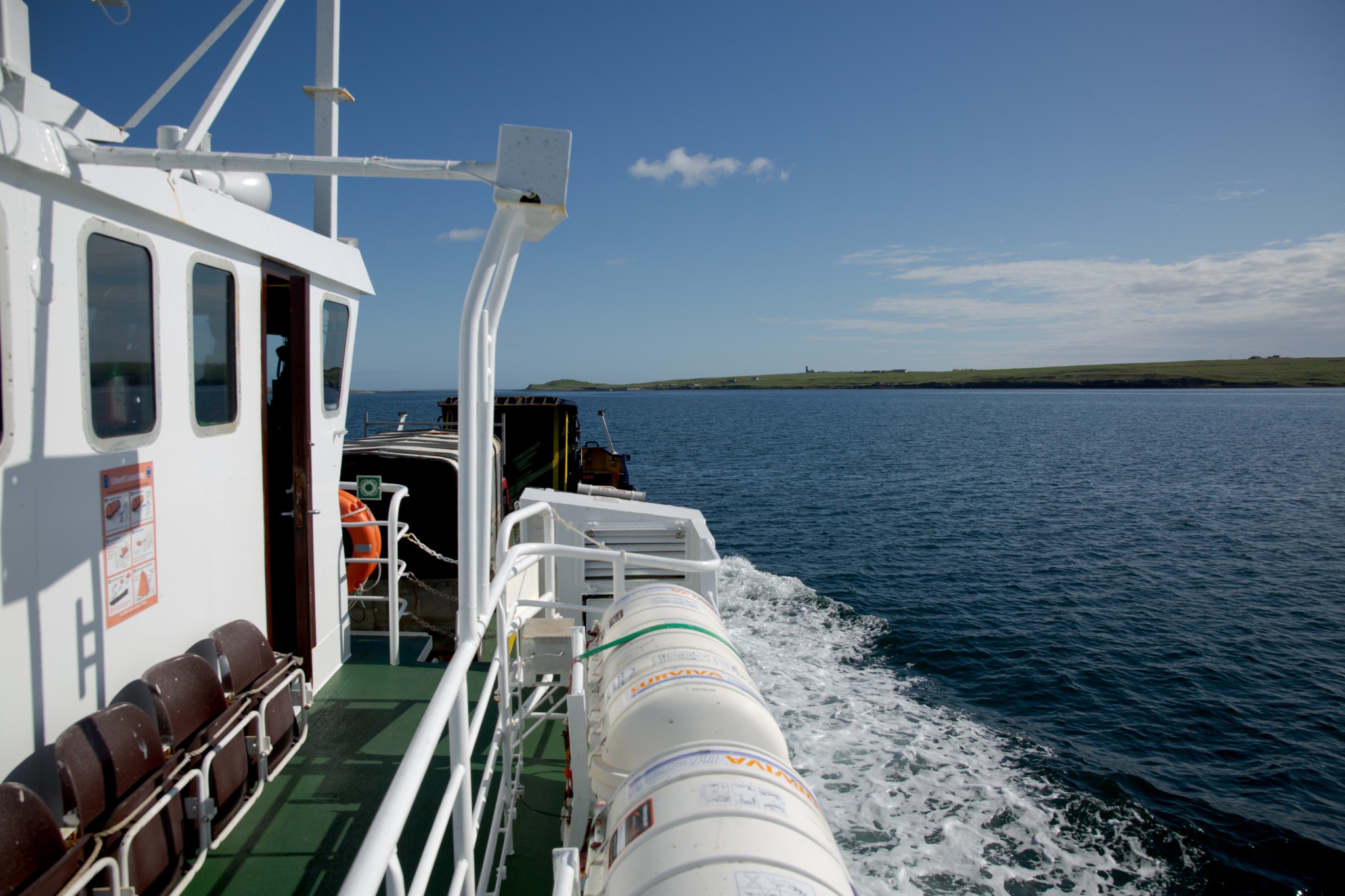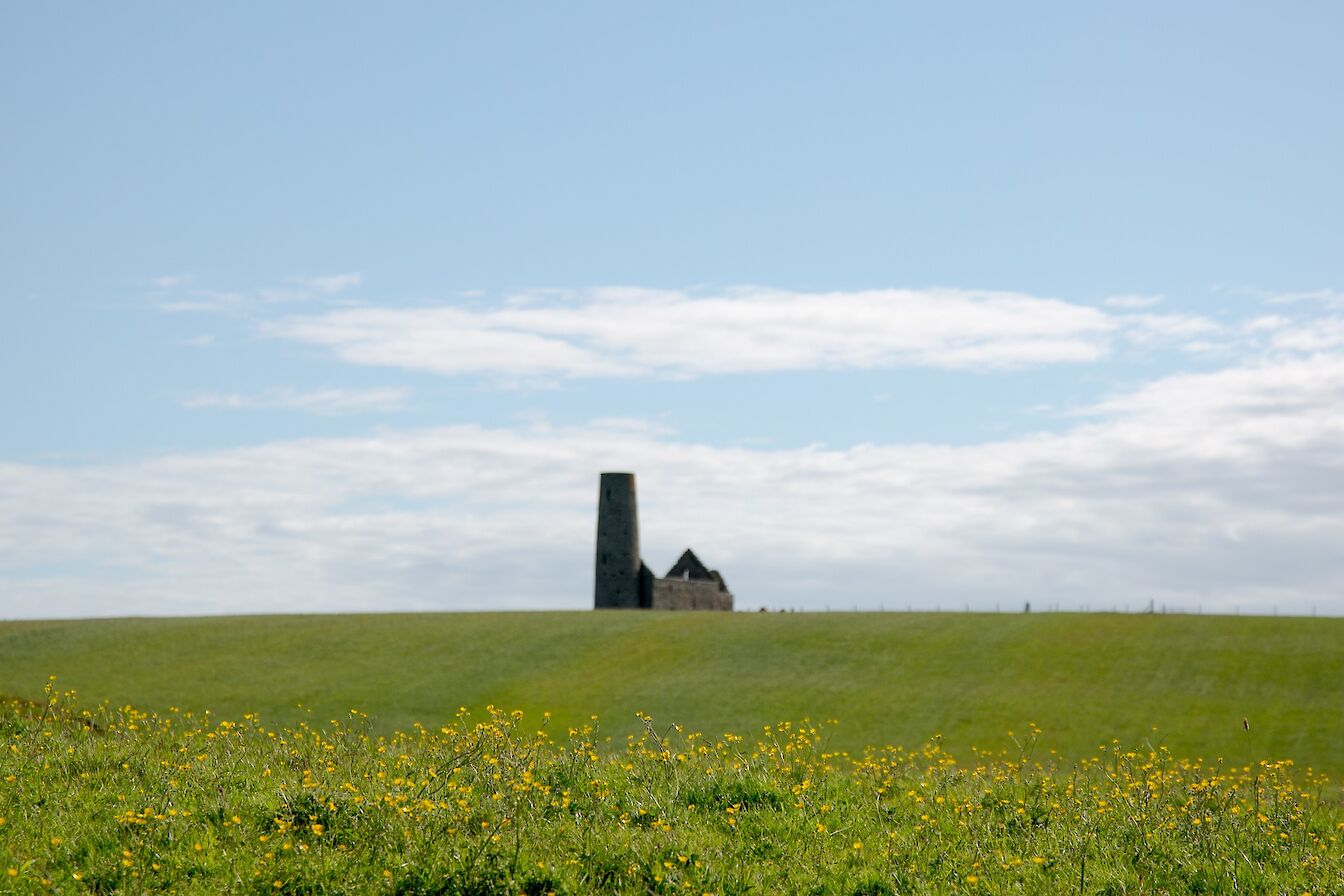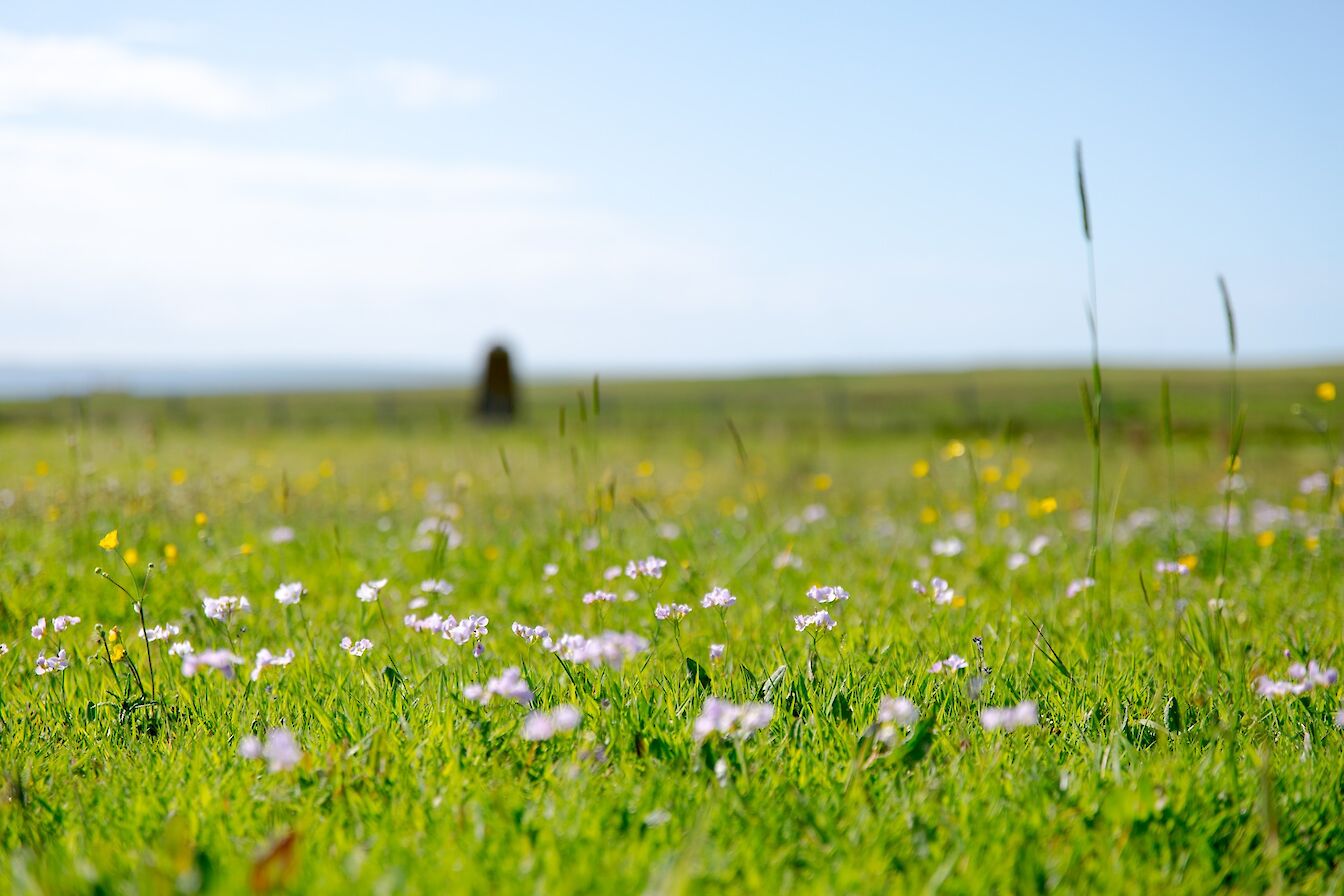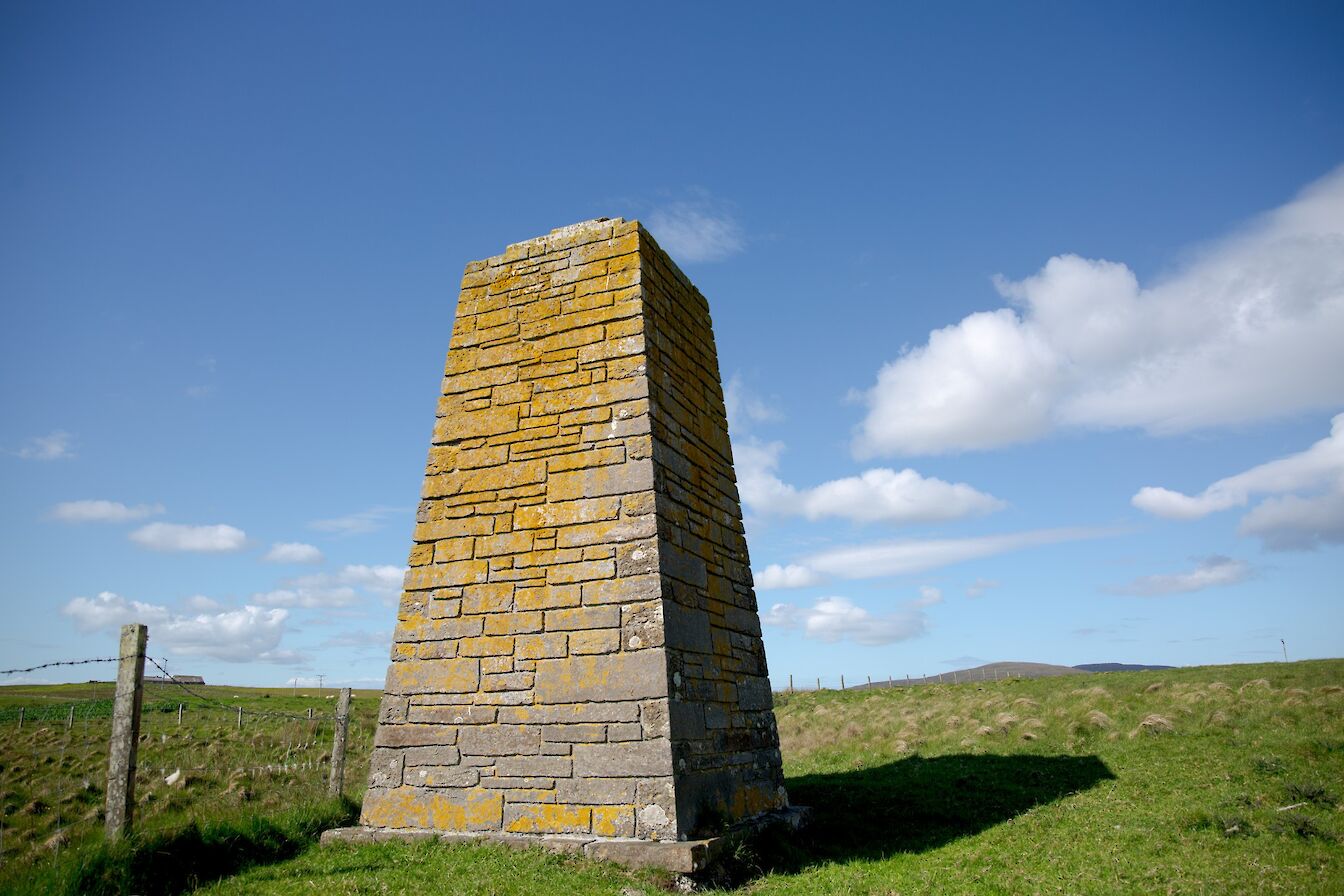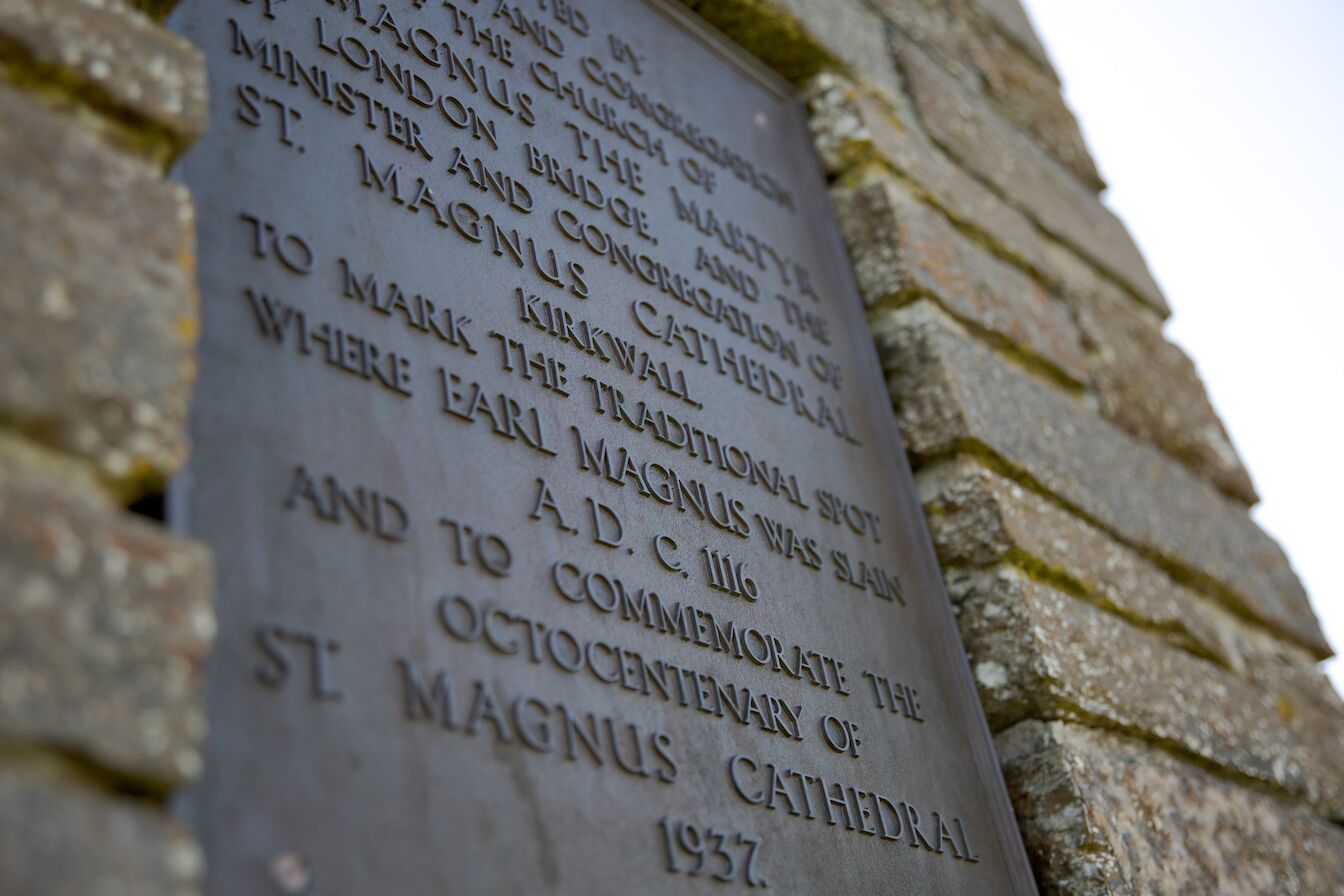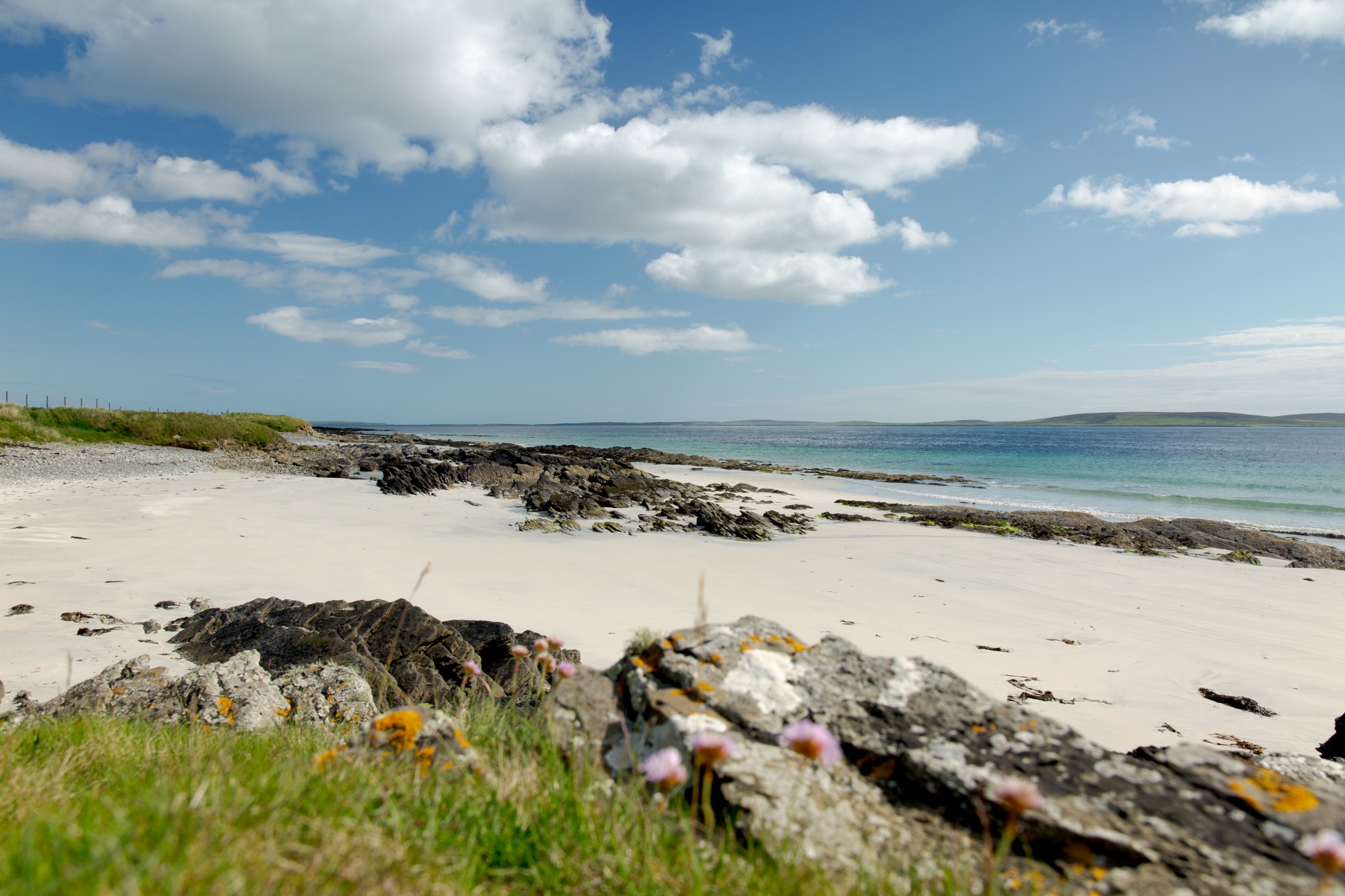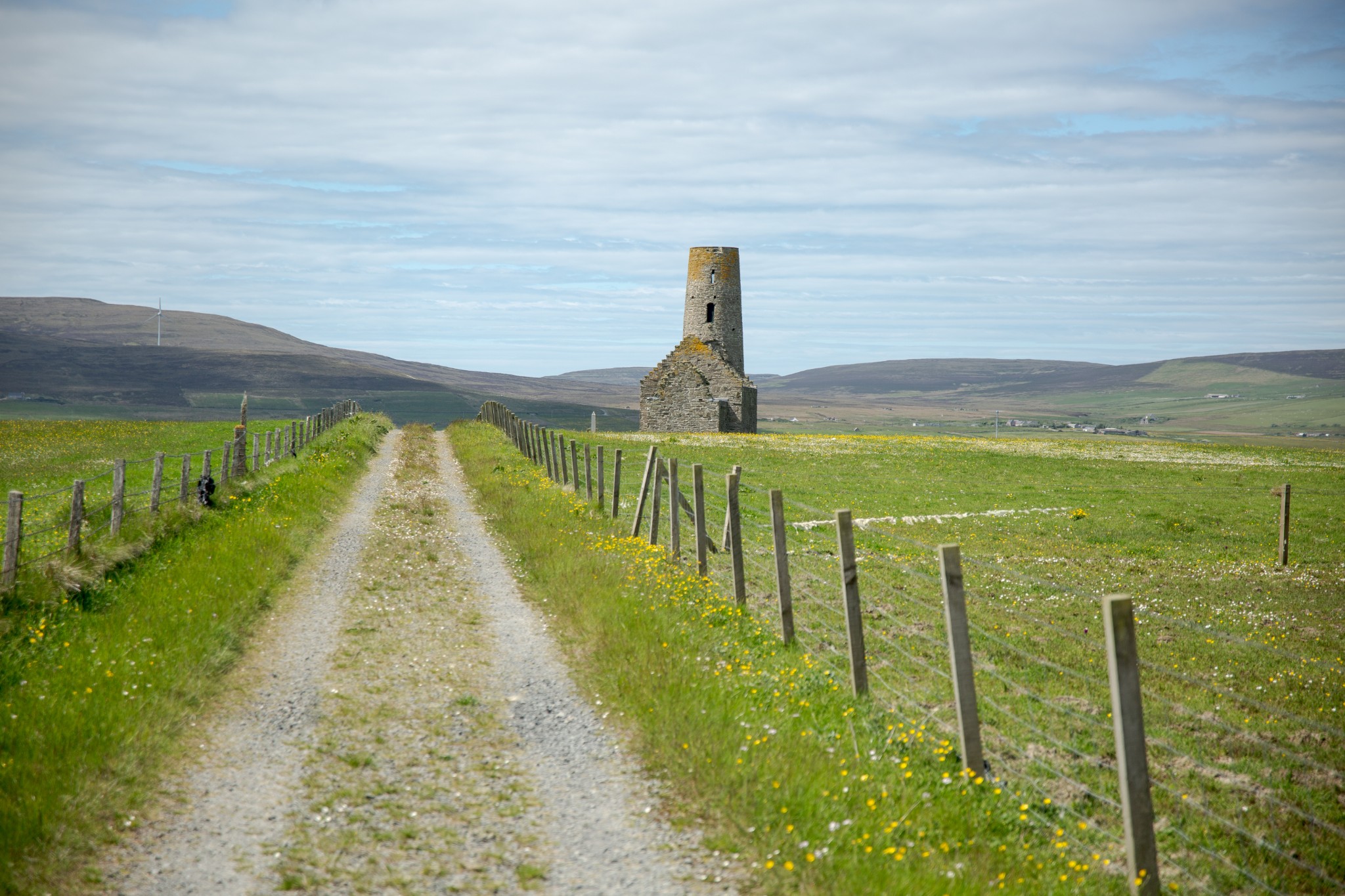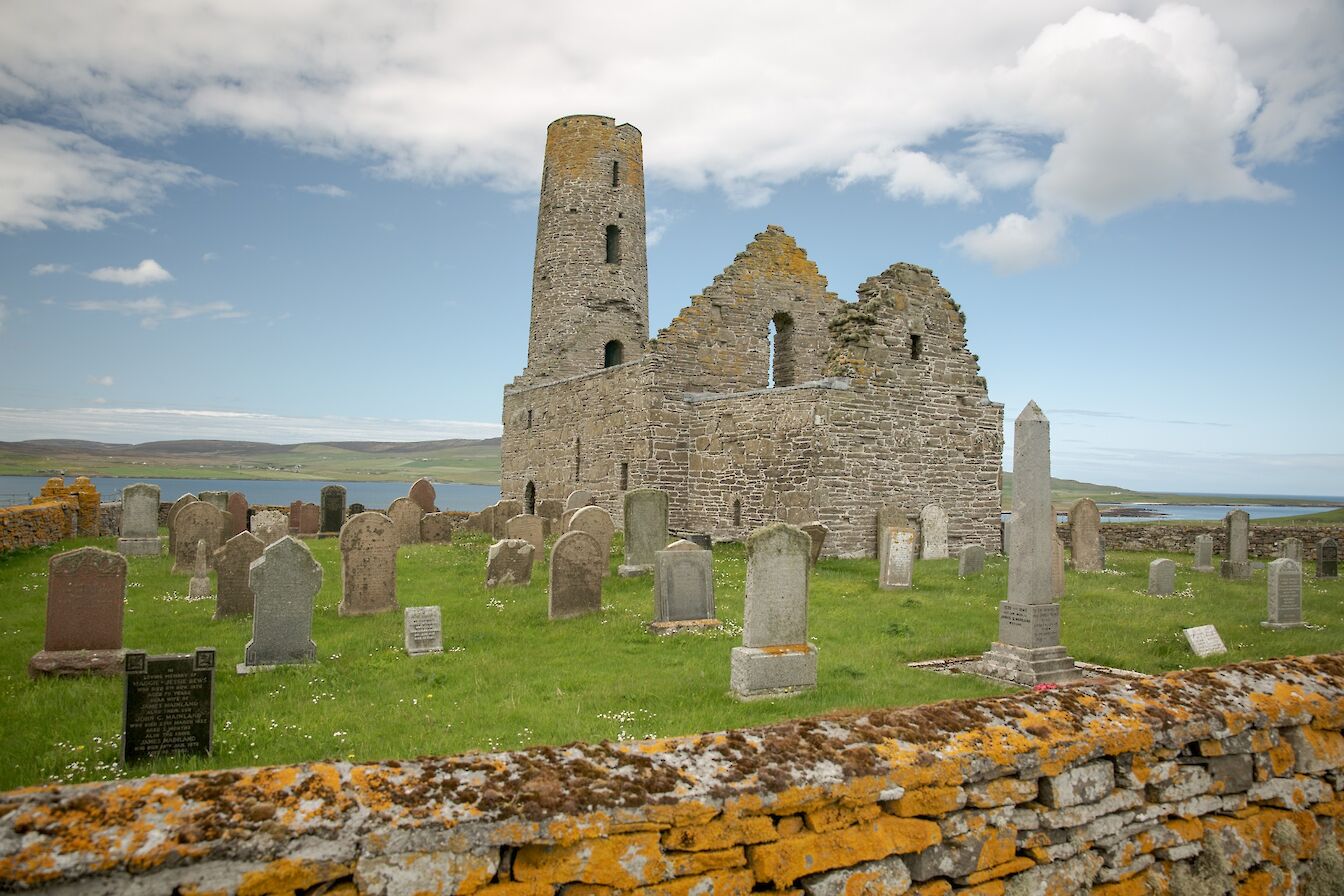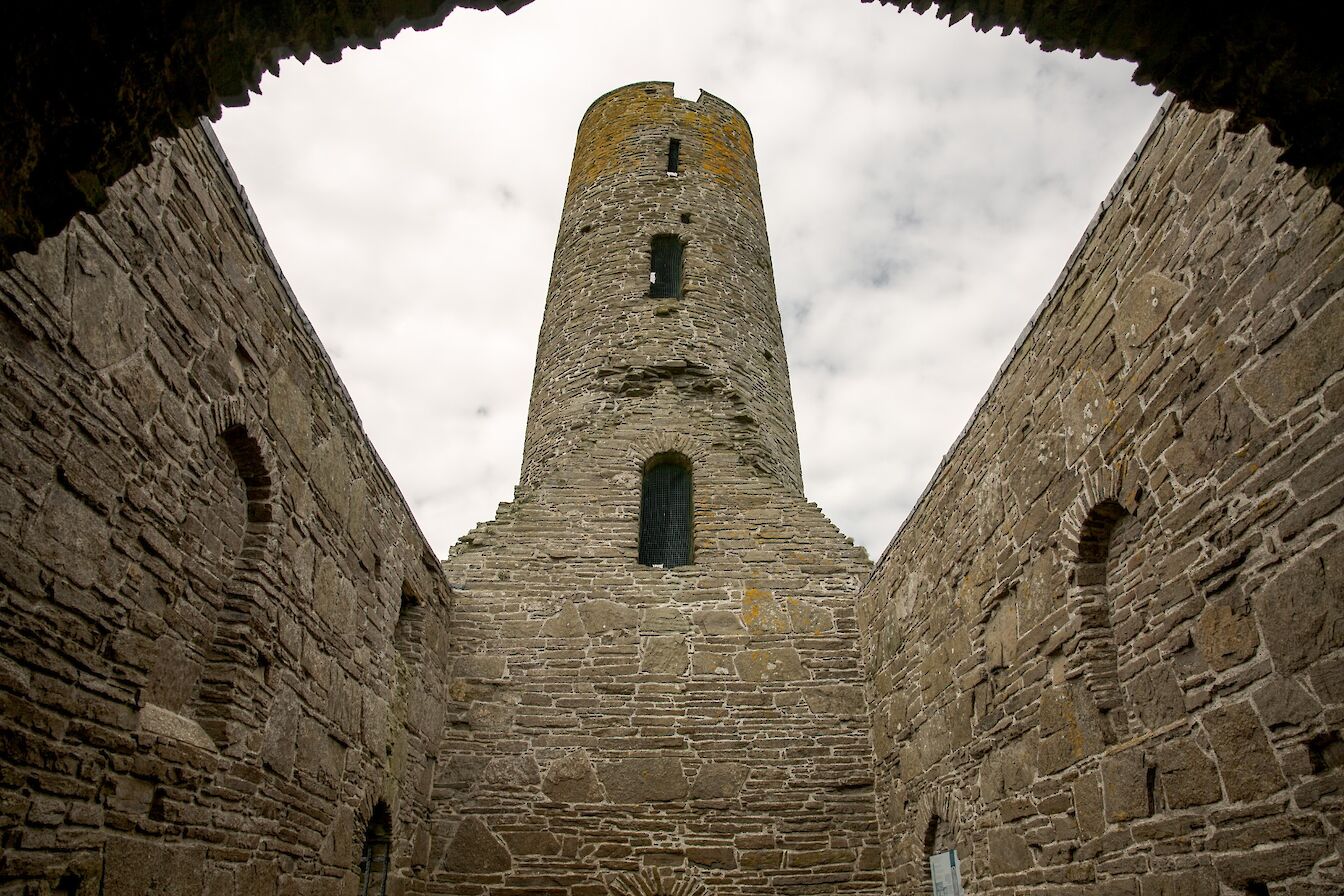A gentle half day’s walk, with a distinctly reflective feel.
Egilsay is arguably the most important site within the story of Magnus, Orkney’s revered saint.
It was on this small island at the very heart of our archipelago that he was martyred – killed on the orders of his cousin Hakon. The brutal slaying of the submissive Magnus over nine centuries ago feels very much at odds with the tranquillity to be found here today.
Our route follows the Egilsay leg of the St Magnus Way, a multi-day pilgrimage based on the journey of the saint’s remains following the martyrdom.
Catch the ferry from Tingwall (the port’s name comes from the old Norse ‘thing’, meaning a meeting or assembly place) in Orkney's West Mainland. As you travel the forty minutes or so via the islands of Rousay and Wyre, imagine yourself with Magnus onboard one of his two ships enroute to finalise a peace treaty with his cousin Hakon.
The pair’s efforts at a joint-ruling of Orkney had - according to the sagas - been undermined by men of ‘evil disposition’. When a freak wave rose in an otherwise calm sea and struck Magnus’ ship he took it as an ill-omen, and so it proved.
From the pier at Egilsay, where you’ll find a small waiting room and public toilet, follow the road which winds gently uphill in an easterly direction. To your left you’ll see the distinctive round tower of St Magnus Church, but we’re not heading there quite yet.
Carry straight on at the crossroads, where you’ll pass the islands community centre on the left (0.84km). The centre is usually open from 10am – 5pm, and you’re welcome to make use of the tea and coffee-making facilities for a small donation.
Just beyond the community centre, on the right, you’ll see a metal gate into a field. Go through the gate and head towards the obvious cairn passing through a further gate enroute (this section does get muddy, so may be best avoided following wet weather).
Having arrived to the summit with the agreed two ships and men, Magnus knew his cousin had proved treacherous when he saw Hakon’s eight warships approaching the following day. After being brought before an assembly of chieftains he was condemned to die.
The sagas tell us that Hakon’s standard-bearer refused to carry out the killing, and it was left instead to his cook, Lifolf, to carry out the deed. Kneeling down and demanding to be struck hard on the skull, rather than beheaded like a criminal, Magnus is said to have given comfort to Lifolf, who was distraught at being forced to kill the popular earl.
Lifolf struck hard, and the martyrdom was enacted. The cairn, erected in the 1930s, marks the spot where the killing is most likely to have taken place.
Return through the kissing gate, turning right to follow the track towards the eastern shoreline. The surrounding rough grazing and wetlands are part of the RSPB’s Onziebust Nature Reserve, and provide a fabulous tapestry of wildflowers, with the sound of curlew and skylark filling the air during spring and summer.
The track ends at a small gate (2.3km) which leads onto a wonderful sandy inlet, the South Geo of Canquoy. The mixture of sand, sea and rock brought together in almost perfect composition, it’s the ideal spot to contemplate ‘peace’ – the theme given to this short Egilsay leg of the St Magnus Way.
If time allows – and the ferry timetable generally provides no shortage of time - turn right to head south along the coast to the larger, neighbouring bay of Ossin. This bay is backed by the Manse Loch, a fine spot for viewing a variety of birdlife.
Return the way you came until you reach the crossroads at the community centre (4.1km). Turn right to head north along the road for around 250 metres before taking the obvious track to St Magnus Church on your left.
While it’s believed that Magnus was killed on April the 16th, the exact year has never been entirely agreed on, but between 1116 and 1118 seems to have gained general consensus. Soon after his death miracles began to be reported. The rough field where he was slain transformed to a green and fertile sward, while after his body was moved to the parish of Birsay a heavenly light was seen above his grave.
The kirk was built around twenty years after Magnus’ death, following his recognition as a saint. The round bell-tower originally stood a full 20 metres high and acted as a beacon for pilgrims. It’s a terrific spot, with magnificent views to the outer north isles, and west across the narrow sound to the distinctively terraced hills of Rousay.
Retrace your route back to the crossroads, turning right to head for the pier and the journey home.
Visit the Scottish Outdoor Access Code website for more information and advice on how to enjoy the outdoors responsibly.
Further information
- Places of interest
Egilsay is a peaceful island, home to only around 25 or so people, but the part it plays in the martyrdom of St Magnus places it right at the heart of Orcadian history. Our walk, part of the St Magnus Way, a 55-mile route across Orkney, is the best way to experience it.
The 12th century Norse church, the St Magnus Kirk is the main attraction here. Featuring a tall tower that would have originally been 70ft high, the building is one of only two of its kind in Europe.
Egilsay’s natural environment can be quite spectacular too. Canquoy is a beautiful beach, and walking here is a joy, with quiet roads and some fantastic wildlife. The RSPB reserve features some excellent wetlands and wildflowers, and you're liable to see seals, gannets and other seabirds during your time here.
Remember, it's worth taking your time on our walking route to soak up the sights and sounds of the island, but also so that you don't encounter a wait at the pier for the returning ferry which also serves the neighbouring islands of Rousay and Wyre.
- Food & drink
There are no cafes, restaurants or shops here, so be sure to take your own food & drink when visiting. The island's community centre is usually open between 10am and 5pm, with self-serve teas and coffees available for a small donation. The island’s heritage room is next door, so you can find out more about the island’s history while relaxing with a cuppa.
- Transport & services
Daily ferries connect Egilsay with the islands of Rousay and Wyre and Tingwall on the Orkney Mainland. View timetables on the Orkney Ferries website. Orkney's number six bus service runs between Kirkwall and Tingwall daily. View the full timetable on the Orkney Islands Council website.
Public toilets are available at the Egilsay pier.
